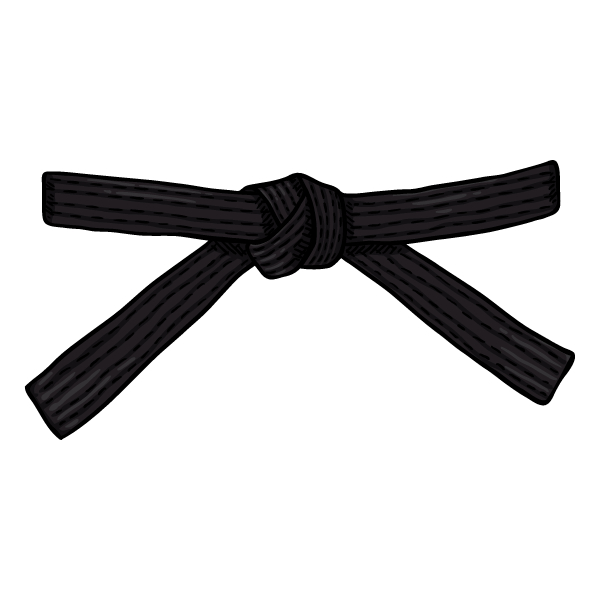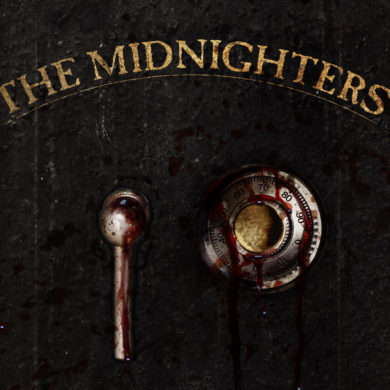Published Date: 12-04-19
By Justin Sanders
“Easy to Use = Hard to Make” is the second of our three-part series about what it takes to build a successful content platform in the age of streaming piracy. In Part 1, “The Black Belt,” we dug into Kane’s background and learned how a grainy YouTube video from his parents’ martial arts camp became the springboard for a visionary content platform. Now, we take a deep dive into what it takes to make such a platform a reality…
Before skateboarding became a multi-billion-dollar global industry, someone had to build a media infrastructure to give it relevance. Which makes one wonder – what other niche sports might be out there, just waiting to be discovered and brought to a larger audience via the current tools at our disposal?
Twenty-two-year-old Jimmy Kane thinks he has an answer. The film producer, tech entrepreneur, and karate black belt runs Adrenaline Worldwide, an online destination for fans of Extreme Martial Arts, a niche sport with a small but impassioned international following. Kane believes Adrenaline’s hub of master classes, tricking demonstrations, live streaming competitions, and other video content can do for extreme martial arts what VHS did for skateboarding in the ‘80s – bring it to the wider audience a sport needs to become part of the mainstream.
Over dinner on holiday break from college, freshman Jimmy Kane had managed to convince his parents that some viral YouTube footage from their martial art school’s annual summer camp showcase was but the tip of the iceberg of a much bigger opportunity: A subscriber-supported online content platform geared toward extreme martial arts enthusiasts.
Like any good producer, Kane proposed a proof-of-concept to his parents to show them what was possible with this ambitious enterprise. He suggested they run an initial livestream of the following year’s camp show that would serve as a litmus test of “how many people we could get to sign up for just one event.” The online broadcast would be free to view with email registration, helping build awareness of the new platform while also gauging interest level with an eye toward future monetization.
Then a film student at Chapman University, Kane saw a chance to seize the reigns of his education and use it in service of his budding entrepreneurship. Though live broadcast writing and producing wasn’t part of his classwork, he began seeking out some of his professors after hours, getting them to step outside of the normal curricula to impart what knowledge they had of this highly specialized skillset. He learned that “there is a master document that you go through when producing a live broadcast that is, in a way, more detailed than a narrative screenplay in that it is timed out to the second,” Kane said. “Everything has to be hit to make sure you get your sponsors in, and that you finish on time.”
Such parameters are “especially important if you’re airing on an actual television network” as opposed to, say, streaming a martial arts camp event onto a microsite – but Kane was determined to treat the platform’s debut like a legitimate sports broadcast. In addition to his extracurricular research at Chapman, he spent large swaths of his free time watching “more than 30 UFC fights,” taking careful note of “their pause points, how long they go for,” and just how they felt – how the different components of hand-to-hand combat could be covered onscreen to create a coherent, exciting whole. Working with his younger brother, Maguire, he brought in on-air commentators, an emcee, and a DJ to give the camp show’s third installment a pulsing backbeat. He also hired a technician to help them tie it all together on a digital video feed.
The site where the livestream lived “was rudimentary” that first year, Kane said, its layout “terrible and hard to use.” They had little advertising leading up to the event beyond “some Instagram posting” – and yet still, more than 2,300 people signed up to watch the feed online, in real time. In a world where videos on YouTube can garner hundreds of millions of views, it wasn’t a huge number, but within the small but passionate global community of extreme martial arts and tricking enthusiasts, it was plenty. Kane and his brother knew they had something. They began to build Adrenaline Worldwide, the first subscriber-based content platform geared toward this community.
Once you start charging people for content, it is imperative to provide as much of said content as possible – consistently and endlessly. That seems like it should go without saying, but it remains a mighty challenge for behemoths like Netflix and Disney, let alone a startup media company sprung from a family-owned karate school by a kid who is still in college and his younger brother.
To fill in the value their subscribers would desire, Adrenaline had some options. They could ramp up the live events – which they did, to three per year – and they could slice and dice footage from those live events, creatively repackaging it into demos, highlights, and other clips. But something more was needed. The events, while by far their most popular asset in terms of views and new subscriber interest, were far too expensive to be sustainable in and of themselves. They needed to generate content that was cheaper and quicker, and yet still watchable. Like any successful content platform, they needed other people to generate it for them.
Of course, they couldn’t ask casual users of the site to provide such material and expect to charge for it. This wasn’t YouTube, where separating the wheat from the truly terrible user-generated chaff is all part of the free ride. This was a subscriber-based platform that was planning to actively take money from ardent martial arts enthusiasts who trusted it enough to pay the piper. They needed to make sure the material was good. Fortunately, as lifelong players within the extreme martial arts community, Kane, his brother, and their parents had access to individual athletes who weren’t just good – they were among the best in the world. You might even say that, within their little athletic niche, they were stars. At the very least, most of them enjoyed sizeable followings on Instagram.
Adrenaline’s cleverest innovation was to create a steady supply of quality content by providing an outlet for extreme martial arts stars such as Shosei Iwamoto and Alex D (AKA “Skillaz”) to convert their social media followers into revenue. The company pays them to create tutorials and other videos, then gives them a percentage of every subscriber they bring to the platform.
“There’s a lot of great interaction on Instagram between the best athletes in the sport and people who are just beginning and want to engage with them,” Kane said. “For some of these fans, getting a direct message from these athletes is like an NBA fan getting a DM from LeBron James. At that point, it’s pretty easy for the athlete to say, ‘Thanks for the love, and hey, while you’re at it, go check out my pro page at Adrenaline Worldwide.’”
Since its first livestream in 2017, Adrenaline has, in fits and starts, and over “hundreds and hundreds of hours” of blood, sweat, and tears, taken shape as a legitimate, self-sustaining content platform. It turns out that building a smooth, seamless online video experience is hard, and expensive. Kane initially wanted it to “function essentially like Netflix, with that easy interface,” but after receiving a $250,000 quote from a web developer, he had to reign in his expectations a touch. Even then, “it is unreal how much work goes into it on a daily basis, and how many fires you have to put out,” he said.
Along the way, Kane has gotten better and better at executing the live shows. Producing student films at Chapman, he “learned how to talk to cinematographers,” he said, and now combines a still-growing technical expertise with his natural flair for martial arts showmanship. The livestreams are more sophisticated, more polished, and with their uptick in quality, Adrenaline’s business model has more clearly taken shape and become more robust.
These days, the live martial arts spectaculars serve to bring in subscribers and showcase the company’s athlete roster. Meanwhile, the athletes’ self-generated daily and weekly supplemental content helps sustain the subscriber base until the next live spectacular. The company has also increased its own production efforts, adding “master class” type tutorials and other premium content alongside the live footage. Adrenaline has also expanded its camp offerings, offering them almost every month in locations all over the world, and now sells merchandise to boot. Each arm of the business supports and draws strength from the other, creating a contained media ecosystem. And yet, as impressive as all this is, it’s not even the most impressive thing of all – because somewhere along the way, Adrenaline Worldwide began to evolve into something eve bigger than the sum of its already impressive parts.
“What we’re doing here is trying to make a professional sports league and put in a set of rules and regulations that creates an infrastructure for this niche aspect of martial arts to take off,” Kane said. “It’s just like how MMA (Mixed Martial Arts) has taken off under UFC (Ultimate Fighting Championship) programming. Before UFC came in and created that infrastructure, it was just a thing people were practicing and doing, but the competition level wasn’t there. We’re trying to create that infrastructure that allows for professional athletes in this sport to go and compete and get sponsored and make a living, like any other sport.”
The Adrenaline business model is designed to turn its athletes into the kind of Tony Hawk-like stars a new sporting sector needs to take off. Martial arts brands now want to sponsor the company’s events. The livestreams are viewed in dozens of countries around the world, and the subscription base for them grows every month. And yet, with all this success there also comes a familiar hurdle that has harmed, and even felled, many sports and entertainment companies that have come before Adrenaline: Piracy.
So ends Part 2 of our tale of black belt Jimmy Kane and his quest to build a successful content platform in the age of streaming piracy. Click here to read Part 1, “The Black Belt,” and be sure to check back with our blog next month for the third and final part, “Black Belts vs. Pirates”. All videos courtesy of Jimmy Kane and Adrenaline Worldwide.

Videos and Header Photo Courtesy of Jimmy Kane and Adrenaline Worldwide



